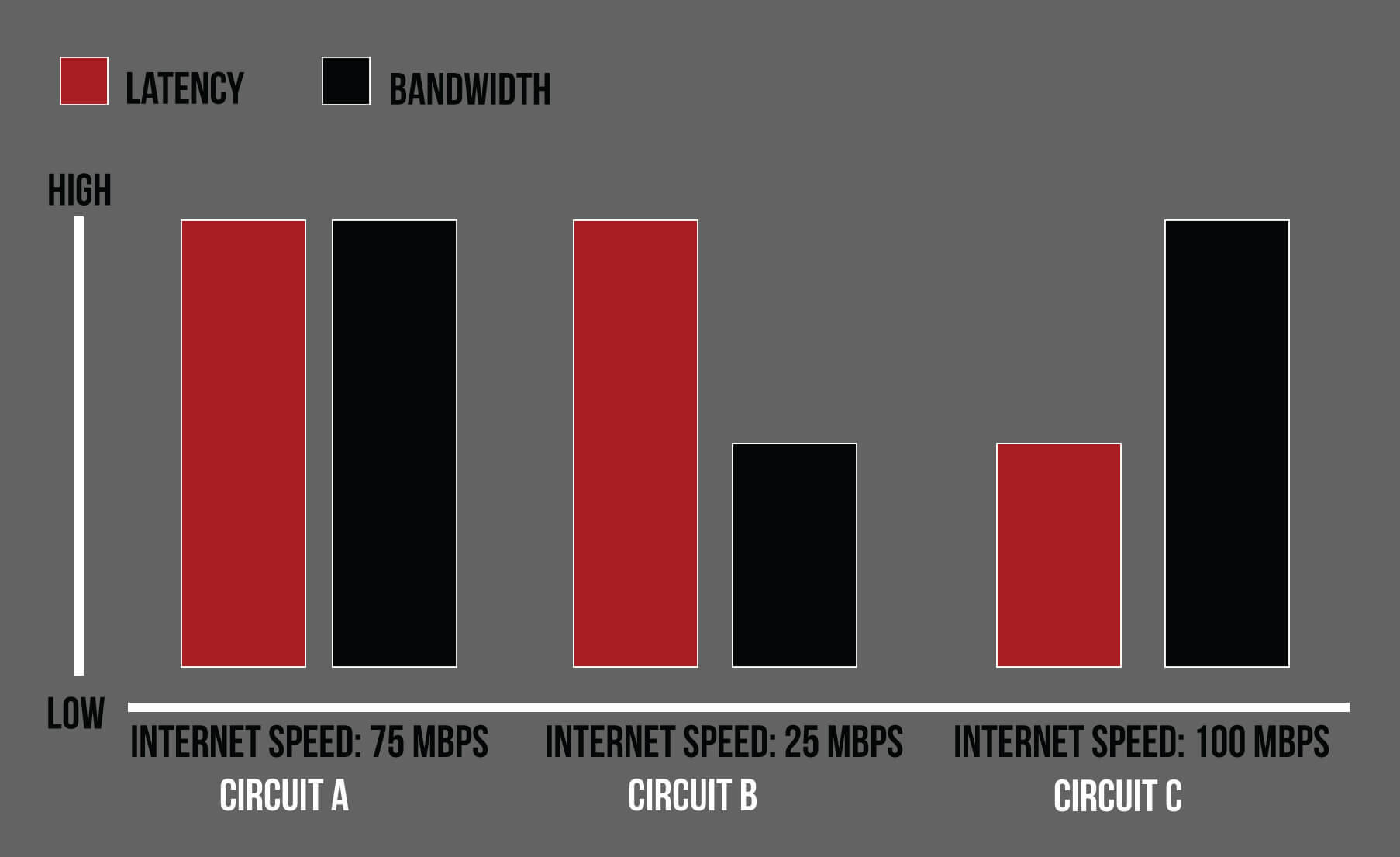What is Latency? Why Does Latency Matter? How Can You Reduce Latency?
Have you ever found yourself frustrated because it’s taking forever to simply load a website? How about uploading a document into an email; do you feel like you might as well watch paint dry? Perhaps you’re in a rush to pull up a customer’s ticket information in your company’s CRM system, and it simply will not load; meanwhile you’re live on the phone with said customer and your conversation becomes a painstaking exchange of delayed echoing – ever been there? There are a multitude of factors that contribute to this all too common series of events. One of the primary culprits? High latency. Latency has a direct effect on internet-based business applications and operations. So, what exactly is latency?
What is Latency?
In networking, latency is defined as the total round-trip time it takes for a data packet to be transmitted from a point of origin, or a single node, back to its source. While there are a variety of factors that affect latency, a foundational component is the physical type of Internet connection a company employs. Satellite Internet, for example, is notorious for having high latency (long round-trip travel times) due to the sheer fact that data has to transmit across tens of thousands of miles into space. Because latency involves speed, the quality of network devices (such as a router) and the quantity of such that data must traverse, also significantly dictates latency.

Why Does Latency Matter?
Simply put – it affects Internet speed.
People commonly mistake Internet speed with Internet bandwidth. Bandwidth is the physical amount of data that can be transmitted over a connection in a fixed amount of time. Internet speed, however, is impacted by the relationship between both bandwidth and latency.
For example, the figure below demonstrates three different Internet circuits. Circuit C has the highest Internet speed because it has low latency and high bandwidth. Oppositely, Circuit B has high latency and low bandwidth and consequently has a severely lower Internet speed.

How Can Latency Affect Your Business?
As outlined above, latency directly affects a company’s network performance. Thus, high latency can negatively impact everything from the loading of a webpage, to uploading or downloading an important document, to the overall efficiency of internal systems. Furthermore, if a business has adapted a VoIP phone system, inbound and outbound call quality can largely be compromised. If not quickly resolved, all these items can culminate into a significant loss of company productivity, reputation, and revenue. Find a few real-life examples of such claims below.
Loss of Productivity:
A team of analysts are tasked with researching a competitor’s newly released product. Intuitively they first head to the Internet to begin seeing what information is readily available. The team quickly discovers that the task is going to take far longer than anticipated due to the simple fact that every web page they visit is taking what seems like forever to load. What could have been an hour project, has now occupied an entire day.
Compromised Reputation:
An e-commerce brand launches a new product line, and it goes viral. Orders are pouring in left and right. While most would think said company would be celebrating, instead they are in sheer panic. Why? The network is encountering the perfect storm – high latency, low bandwidth, maxed throughput – consequently, the company’s backend online order portal crashes. Without an adequate backup circuit, the portal remains down for multiple hours. Those few hours massively delay the company’s internal operations and lead times preventing them from delivering in the promised 48-hours. End result? High call volumes and unhappy customers.
Loss of Revenue:
More and more business transactions, both internal and external, are moving online every day. For instance, look at any restaurant with a POS system. POS systems, used to input orders and process payments, require an Internet connection. Slow Internet = delays = long wait times = customers choosing to go next door to your competitor = lost revenue.
So, How Can You Reduce Latency?
While technically speaking latency can never be fully dissolved, there are ways business owners and IT Directors can decrease delays.
Choose Your ISP Carefully
The simplest way to reduce latency is to transfer the responsibility onto your business Internet Service Provider (ISP). Avoid Satellite connections, upgrade to a dedicated Internet circuit, and only onboard with telecoms that have a strong Service Level Agreement (SLA) that assures low latency. GeoLinks’ SLA, for example, guarantees round trip latency under 40ms.
Establish a Business Continuity Plan
We’ve already established that ensuring internal systems operate as efficiently as possible is essential to a company’s success. Thus, what do you do if your primary circuit is experiencing high latency (despite your ISP’s SLA)? Ideally, you switch to your backup circuit operating on an entirely different network. Onboard your services with an aggregator, like GeoLinks, and your provider can manage both connections seamlessly.
Invest in SD-WAN
SD-WAN (Software Defined Wide Area Network) is a software-based approach to managing Wide Area Network (WAN) connections to more effectively route all network traffic between headquarters or data centers, remote and branch offices, and the cloud. Not only can SD-WAN issue automatic failover to an alternative or backup connection, the technology is able to define network policies based on business intent and steer traffic intelligently forgoing additional hops. The result? Reduced latency and overall higher application performance.

For the majority of consumers, the difference between 168 milliseconds and a single millisecond merely equates to convenience. For a modern and connected business, on the other hand, latency can be far more impactful. So, if application performance and Internet speed play an important role in your day-to-day business operations, reducing and preparing for high latency is paramount.
Want to learn more about SD-WAN, GeoLinks’ SLA, Business Continuity, or Shared vs Dedicated Internet access? Talk to a GeoLinks’ Client Consultant today!

